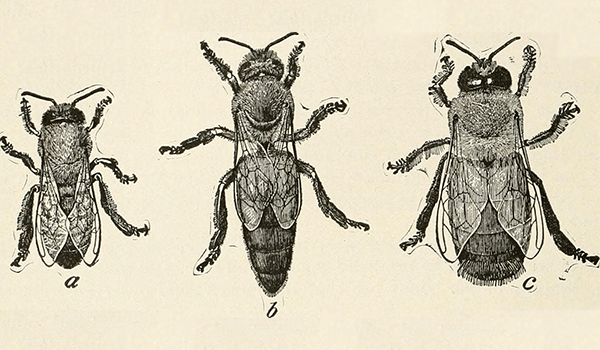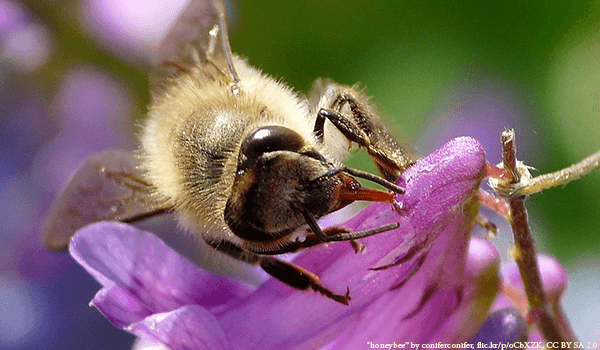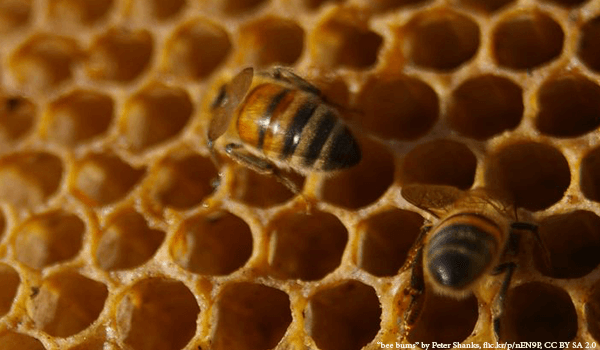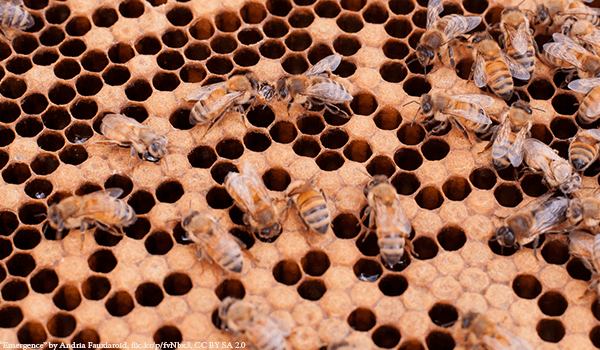While we all enjoy the tasty results of the honey bee’s hard work, how many of us actually know how honey is made?
Well fear not because the wiz kids here at Plan Bee can explain all.
First of all it’s important to understand that different bees have different jobs, there are the various worker bees who feed the larvae or go out ‘scouting’, looking for flowers and collecting nectar – a sugary liquid used to make the honey- as well as the drone bees who mate with the Queen whose purpose it is to lay eggs and raise hive morale.
 A: Worker Honey Bee – B: Queen Honey Bee – C: Drone Honey Bee
A: Worker Honey Bee – B: Queen Honey Bee – C: Drone Honey BeeWhen a forager bee sources a flower they will drink the nectar using the extremely long tongue and store it in their ‘crop’ or specialist honey stomach, when they have drunk their fill they will fly back to the hive and pass their loot on to a ‘processor’ bee at or near the entrance of the hive before heading back out to source more nectar.

The processor bee then transports the nectar to the honeycomb, where it transfers it into the hexagonal wax cells. Here the processor bee adds an enzyme called ‘invertase’ to the nectar in the cell and the nectar consisting mainly of sugar and water – or for you science boffins out there, sucrose- is broken down by the invertase into glucose and fructose.
A small amount of the glucose is attacked by a second enzyme, glucose oxidase, and converted into gluconic acid and hydrogen peroxide. The gluconic acid makes honey an acid medium with a low pH level that is inhospitable to bacteria, while the hydrogen peroxide gives short-range protection against these same organisms when the honey is ripening or diluted for larval food.

The bees then ‘dry out’ this sticky mixture by fanning their wings to evaporate any moisture within the honeycomb.
When the nectar has ripened into honey it contains so little water than microbes cannot grow in it, which is the reason why honey is practically immune to funghi and bacteria, however this only applies when the honey is sealed, which the bees do at this point by capping the honeycomb.

It is at this stage where bee keepers know that the honey is ripe and ready to be harvested where it is then jarred and delivered to the breakfast plates of millions of people worldwide.